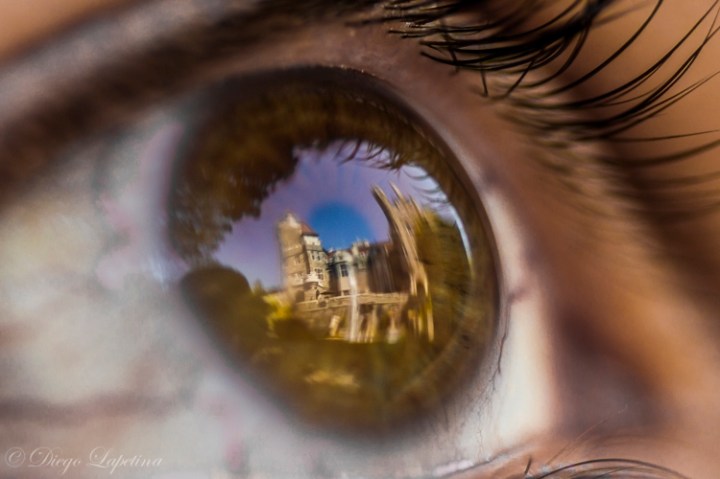
Because of Curt’s helpful comment on Eyes and Security Issues for Digital Photos, I’d like to write part two, adding more observations and a photo. Capturing images of people and places in corneal reflections in hi-res photos raises thoughts about security and privacy for missions in the future.It will be helpful for you to read the first article. I mentioned several considerations and continue those thoughts here. Many of our photos would not be a concern, but some might have potential security issues in the future.
Ideal Lighting Conditions
The study used ideal lighting conditions. Many of your reflected images in eyes (or other reflective surfaces) could be of people silhouetted by back lighting. A face doesn’t show up in this type of reflection.
Size Matters
Curt points out we should be in the habit of uploading smaller photos, like KB sizes, not MB or GB. When these are enlarged, any reflected image is too pixelated to be identifiable. Unless you’re a professional photographer or offering wallpaper images, you shouldn’t be uploading very large photos. (More on this topic in Watch Out for Photo Sizes.) Facebook automatically compresses your photos to smaller sizes. Other sites might not.
Lions, and Tigers, and Bears! Oh, my!
I discovered several photos of reflections in bird and animal eyes when searching for a photo for this post. So, if your photo if of very high quality and size, these reflections could be a concern as well.
Where Are You?
Perhaps you’re already careful not to show buildings or reflections from windows and mirrors. You may not have considered that buildings and other locations could show up in an eye’s reflection and because of the eye’s curve, even peripheral vision will be reflected in the cornea.
Do an Experiment
If you’re concerned about a photo, crop the face and then expand the cropped image to fill the screen of a good monitor to see how the reflection in the eye looks. You might want to adjust the contrast, too, to see if you can recognize the people or location in the eye’s reflection. If you’re not using professional equipment, chances are any corneal reflections will be too pixelated to be recognizable when enlarged (that is, broken up into square pixels).
Download Your Camera
You may not be uploading sensitive photos to the Internet, but you still need to consider where you store them. Are important photos stored on your phone or camera that could be stolen on a trip? I’m not wanting to cause an unwarranted alarm, but I do believe we need to be aware and take precautions when warranted because as persecution comes, we’re warned; “Look, I am sending you out as sheep among wolves. So be as shrewd as snakes and harmless as doves. But beware! For you will be handed over to the courts and will be flogged with whips in the synagogues.” ~ Matthew 10: 16 – 17 (New Living Translation)
NOTES:
- I couldn’t find any information online about corneal reflections taking from stills in a video.
- This photo of a reflection on an eye is available from Wikimedia Commons.

